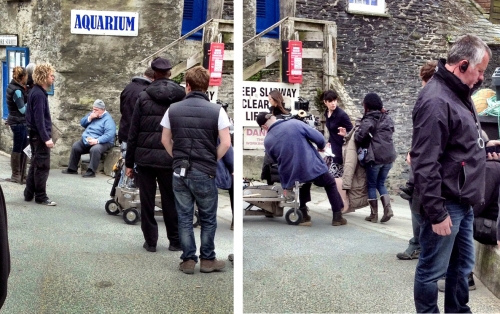As usual there just isn’t enough time to get to everything so here’s a few sad and peculiar tales that got lost in the shuffle.
‘Black Friday’
In October of 1881 the fishermen of the North Sea could not have predicted that a European windstorm, the strongest of all extratropical cyclones, was moving their way. Because of the unsettled weather the fishermen of Eyemouth had been unable to put to sea all that week. By Friday the 14th everyone’s stores were exhausted and bait was going stale. The morning broke clear and calm yet the barometer was still abnormally low. The younger men knew that if they didn’t put out to sea there would be no food for their families until, at least, Monday evening. The older fisherman cautioned against it, but the impatient younger men, with hungry families and loans to repay, ignored the more experienced advice and, one by one, raised their sails and moved out of the harbor. They sailed nine miles out to the fishing grounds unaware that the storm had already broken along the coast further south. Suddenly a horrible stillness fell over everything, the sky darkened and the storm clouds began to roll in. Most of the fishermen, having no time, cut their lines and turned into the wind, while others made a run for Eyemouth.
On the shore, whole families gathered and watched through the driving spray and lashing rain as their fathers, brothers and husbands crashed into the rocks along the coast. By the end of the mornings 189 fishermen had died, 129 from Eyemouth. Every family was effected as 250 children were left fatherless.
This small and very heartfelt bronze memorial, created by sculptor Jill Watson, stands on the bluff above the harbor where the women and children gathered and watched their loved ones perish on the rocks just off shore during the Eyemouth Fishing Disaster of 1881.
Lives Of The Rich & Famous
In our age of celebrity we tend to think of the rich and famous as having charmed lives free of stress, worry and anxiety. Lives in which everything they could ever want is right at their fingertips. Lives filled with adoration and privilege. They appear to look good, feel good and fill their trouble free days with unimaginable joy. I think this notion is completely illusionary and with the exception of an incredibly lucky few, has no basis in reality. If it’s not true now, then it definitely wasn’t true in the 16th &17th centuries. Here’s just a few examples.

Archibald Campbell, 1st Marquess of Argyll
Archibald was a man of immense power who shifted his political allegiances between the Protestants and Catholics as the prevailing winds blew. Even his father referred to him as a man of craft and falsehood. Eventually he found himself on the wrong side and in 1660 Charles II had him arrested and executed. His famous squint and gloomy countenance earned him the nickname of “Archibald the Grim”.

Lady Arabella Stuart
This potential heir to both the Scottish and English crown was amazingly wealthy. Her evil mother kept her in a semi-imprisonment for most of her life. When Arabella finally gained a little freedom she eloped without her cousin, the King’s, consent. He was so furious he imprisoned her in the Tower of London were she starved herself to death.

James Douglas, 4th Earl of Morton
Morton was always a troublemaker. He infamously introduced the guillotine to Scotland. After trying to de- stabilize the reign of Mary, Queen of Scots he was convicted of taking part in the murder of her beloved Lord Darnley 13 years earlier. He was publicly executed with the very same guillotine he had brought to the country.

Henry Stuart, Lord Darnley
An heir to both the English and Scottish thrones, Henry was married to his cousin Mary, Queen of Scots. Mary crowned him King of Scots. Although adored by Mary, he quickly proved himself to be spoilt, arrogant, unstable and completely incompetent. He was murdered just one year later at the age of twenty one.

James Graham, 1st Marques of Montrose
Montrose was another man of privilege that just couldn’t make up his mind. First he was a Royalist, then a Clan Chief, then a Covenanter and then a Royalist again. Always in trouble, Jimmy hid out in the Highlands, then England, then France and eventually returned to Scotland only to be captured and brought to the High Street in Edinburgh where he was hung, cut down while still alive, had his entrails cut out and set ablaze, and finally was drawn and quartered.
Strange Things
Peculiar creatures are not restricted to the windows of Haarlem. They have, apparently made their way to Scotland.

















































































